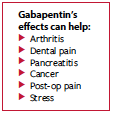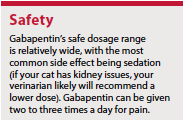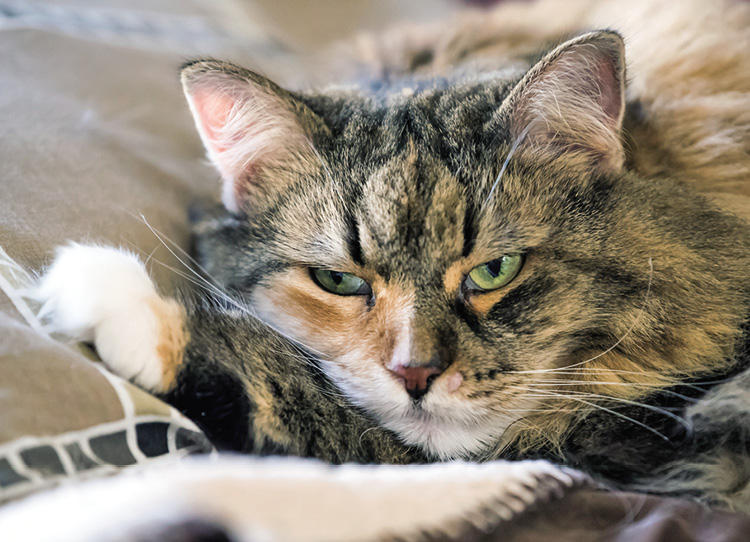Pain management is an integral aspect of health care. Uncontrolled chronic pain is more than just physical pain, as it often causes significant emotional and psychological damage. Managing all these repercussions of chronic pain is imperative for your cat’s quality of life—and yours. A cat battling chronic pain may act out with unacceptable behaviors, like urinating and defecating around the house, self-trauma, or redirected aggression with you potentially being the target. It’s a stressful situation, but the drug gabapentin may help, and more veterinarians are prescribing it.
Until recently, effective pain management was hampered by limitations on medications that could be used in cats. The way cats metabolize certain drugs, like the original non-steroidal anti-inflammatory drugs (NSAIDs) used in dogs, make these medications potentially toxic to cats. Thankfully, times have changed. Newer generation NSAIDs that are safe for use in cats are available, and there are several opioid pain relievers, too. Gabapentin, however, is unique.
What Is Gabapentin?
Gabapentin is pharmaceutically classified as an anticonvulsant (anti-seizure) medication. It  works by blocking the transmission of certain signals that set off seizures in the central nervous system. Recent research showed that some of these same transmitters are involved in pain perception, which is what spearheaded the idea of using gabapentin for pain control.
works by blocking the transmission of certain signals that set off seizures in the central nervous system. Recent research showed that some of these same transmitters are involved in pain perception, which is what spearheaded the idea of using gabapentin for pain control.
While gabapentin is best known for managing neuropathic (nerve) pain, it is proving useful for other painful conditions. Gabapentin works especially well in combination with other medications, like NSAIDs or opioids, when these are necessary for severe or unrelenting pain.
Stress Relief
Now let’s talk about stress. Managing a stressed cat is no picnic for you or your veterinarian. Gabapentin, though, has a useful side effect: sedation. Veterinarians can take full advantage of this side effect to help our furry felines handle their stress.
 “The use of gabapentin in cats for hospital visits has vastly improved the experience of my feline patients and their owners,” says Dr. Andrea Lee, Cornell Class of 2002, and small animal practitioner in Syracuse, N.Y. “The mild sedation helps with transport to my office, the exam, and any procedures that need to be done.”
“The use of gabapentin in cats for hospital visits has vastly improved the experience of my feline patients and their owners,” says Dr. Andrea Lee, Cornell Class of 2002, and small animal practitioner in Syracuse, N.Y. “The mild sedation helps with transport to my office, the exam, and any procedures that need to be done.”
Gabapentin can be a magical chill pill for cats in this scenario. At the correct dosage, gabapentin calms and relaxes most cats, even the super scared ones, making a veterinary visit much more pleasant for you, your cat, and your veterinarian.
The dose recommended by your veterinarian is usually given one to 1½ hours before you need to leave for your appointment. If your cat is still difficult to get into the carrier using this protocol, your veterinarian may recommend having you give a dose at bedtime the night before with a second dose before the visit.
Examples of other stressful events for which gabapentin may be useful include bathing/grooming, parties at your house, and weekend guests with dogs. The decision about whether this is right for your cat must be made with your veterinarian.




